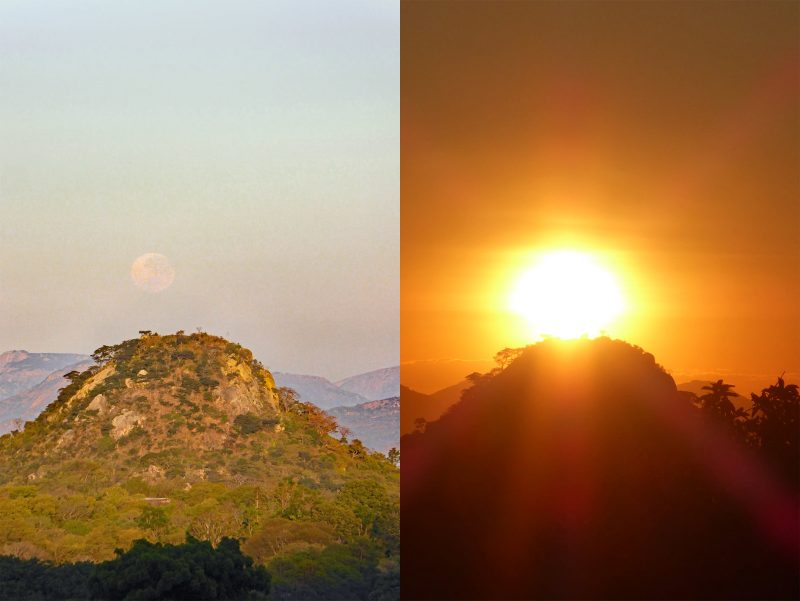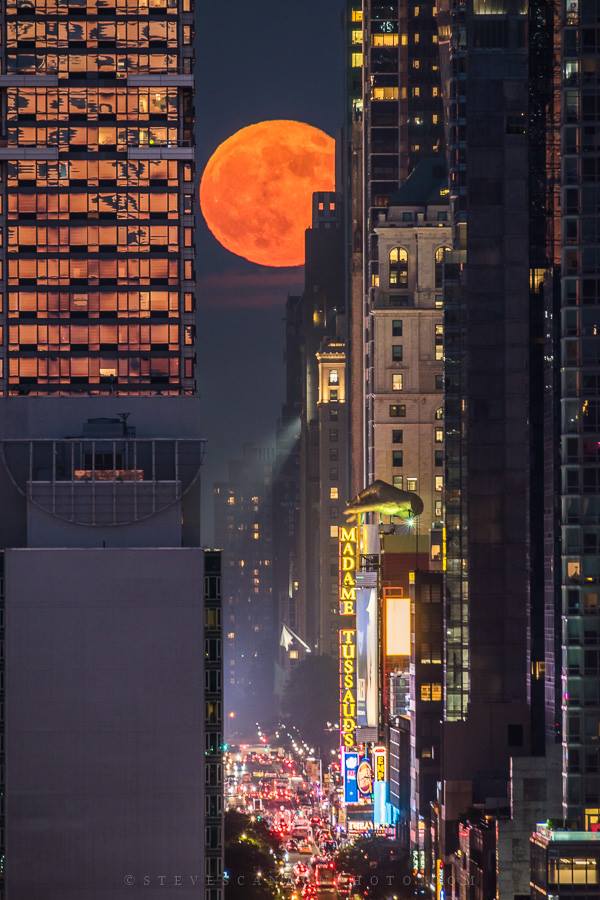
The full moon overnight of June 13-14 is a supermoon.
When to watch in 2022: Nights of June 13 and 14.
Where to look: Look for the bright round moon in the east in the evening, highest in the sky around midnight, and in the west before sunrise.
Crest of the full moon falls at 11:52 UTC on June 14, 2022. That’s 6:52 a.m. CDT on June 14 in central North America – about 12 hours after it rises on the evening of June 13. So, if you live in either North or South America, your fullest moon hangs in the west just before sunrise on June 14.
All full moons rise along the eastern horizon at sunset, and set in the west near sunrise. Full moons are visible all night. At full moon, the sun, Earth, and moon are aligned in space, with Earth in the middle. The moon’s day side – its fully lighted hemisphere – directly faces us. That’s why the moon appears full.
Note that all full moons rise about an hour later each day. And note that the moon will look full and round the day before, and the day after, the crest of its full phase. So the moon will look full and bright on both June 13 and June 14.

June 2022 full moon is a supermoon
The June full moon in 2022 happens about 8 hours before the moon’s perigee, or closest point to the Earth for this month. So the June full moon is considered a supermoon. EarthSky uses supermoon dates as determined by astronomer Fred Espenak, aka Mr Eclipse (he’s best known for his time at the Goddard Space Flight Center, where he became a world expert on eclipse predictions). Fred’s full supermoon table gives us these values – dates and moon distances – for supermoons in 2022. Contrast these moon distances to the average moon distance of 238,900 miles (384,472 km).
May 16: 225,015 miles (362,127 km)
June 14: 222,238 miles (357,658 km)
July 13: 222,089 miles (357,418 km)
August 12: 224,569 miles (361,409 km)
Notice that the supermoon of July 13 will be the closest supermoon for 2022.
Supermoons don’t look larger in the sky, but they do look noticeably brighter! And they have a stronger-than-average effect on Earth’s tides.
It’s the Strawberry Moon
All the full moons have names. Popular names for the June full moon in Europe include the Honey Moon and the Mead Moon. Some Native Americans used the name Strawberry Moon for the June full moon, and that name is still the most common in North America. The name Strawberry Moon highlights the time of year when many species of berries open, particularly sweet strawberries.
Read: Full moon names by month and by season
June full moon mimics December sun
Because a full moon stays more or less opposite the sun, the full moon’s nighttime path mimics the sun’s daytime path from six months ago, or six months hence.
This full moon occurs quite close to the June solstice, so this full moon follows nearly the same path across the sky as the December solstice sun. The December solstice is the Northern Hemisphere’s winter solstice. So the moon’s trek on the nights around the June full moon will resemble the low path of the winter solstice sun.
North of the Arctic Circle, the wintertime sun never climbs above the horizon. Neither will this June full moon.
Meanwhile – in the Southern Hemisphere – the moon’s flight across the sky will mirror that of the high summer solstice sun.
And, south of the Antarctic Circle, the moon will be out for 24 hours around the clock, simulating the midnight sun of summer.

June full moon is in Ophiuchus in 2022
The June full moon can lie in front of one of three constellations of the zodiac. The first is Scorpius the Scorpion. The second is the lesser-known constellation Ophiuchus the Serpent Bearer. And the third is Sagittarius the Archer.
As seen from the Americas, the full moon on the night of June 13, 2022, will be located in the direction of Ophiuchus, the Serpent Bearer. Yet you’ll notice a bright star nearby: Antares, Heart of the Scorpion in the constellation Scorpius.
When it rises on June 14, 2022, the moon will still appear full. On that night, from the Americas, it’ll lie eastward of the previous night’s location, in front of Sagittarius, among the noticeable asterism called the Teapot.

Bottom line: The June full moon – a supermoon – will fall on June 13-14, 2022. We in the Americas will see the moon as most full in the early morning hours of June 14..
Farmers’ Almanac Full Moon Calendar
The post Full moon in June mimics path of December sun first appeared on EarthSky.
0 Commentaires